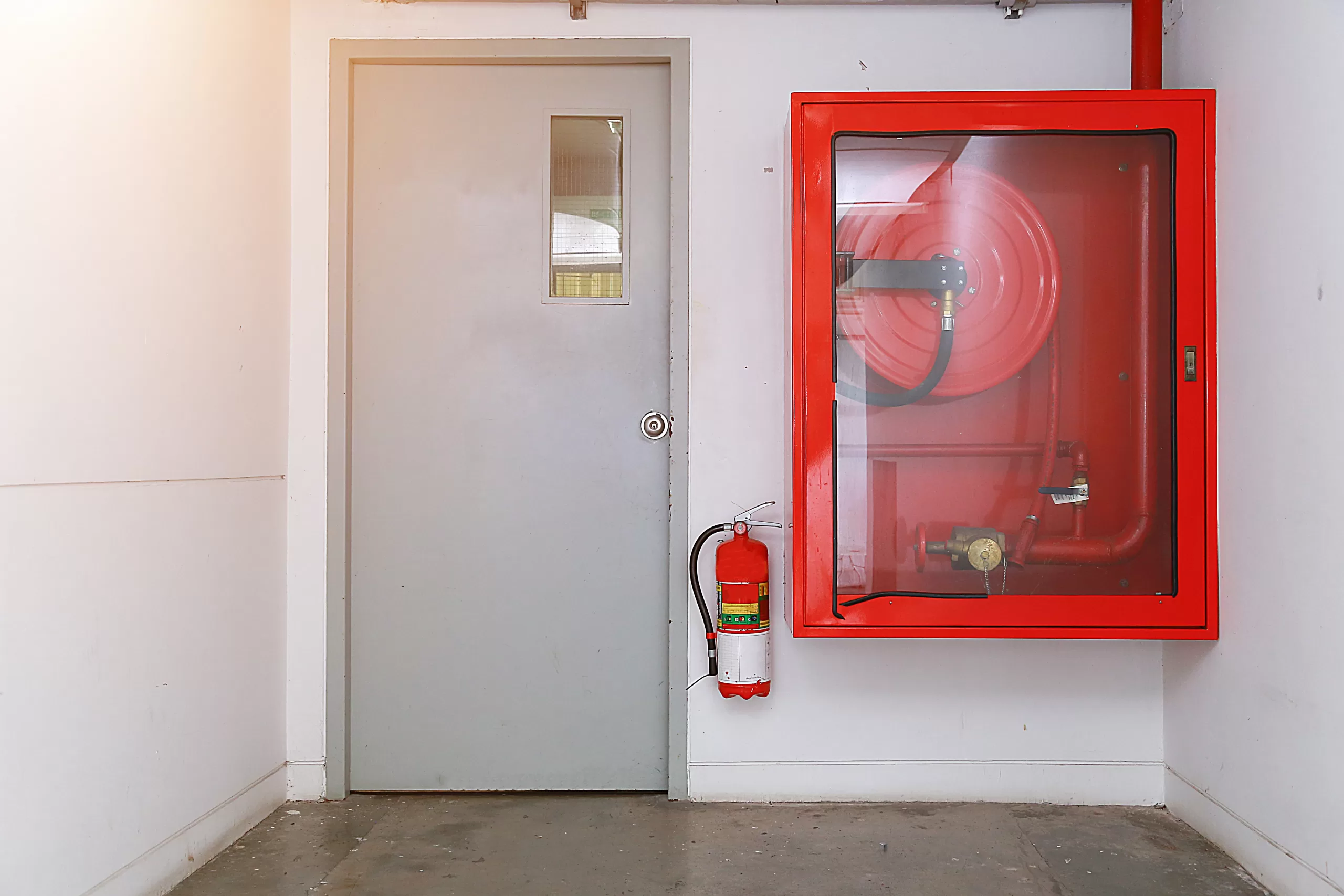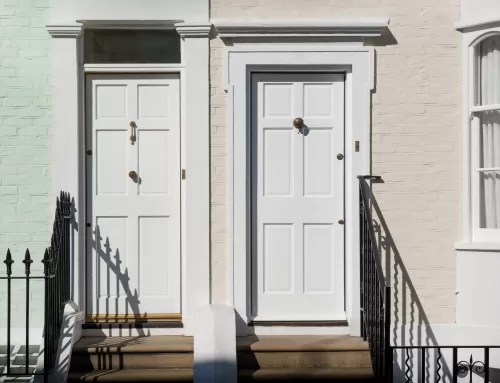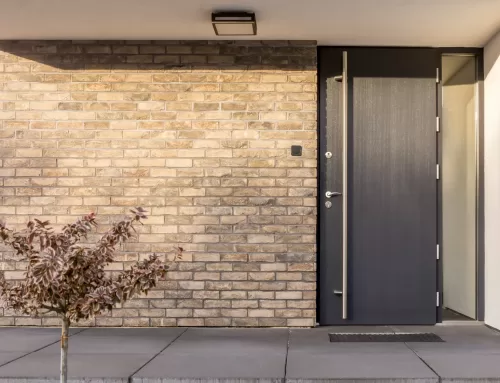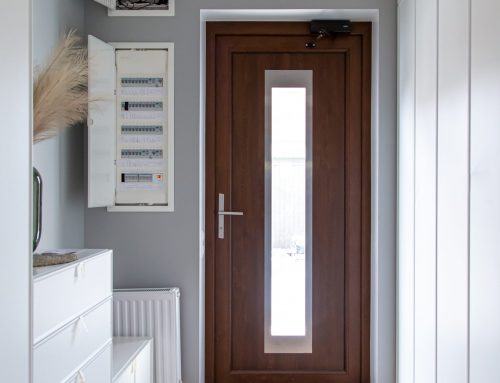Ensuring the safety of your property is paramount, and understanding the regulations surrounding fire doors is a crucial part of that. This article will delve into the intricacies of external fire door requirements in the UK, clarifying when and where they are necessary.
What Exactly Are Fire-Rated External Doors?
Fire-rated external doors are specifically designed to resist the spread of fire for a designated period, typically measured in minutes (e.g., FD30, FD60). Unlike standard external doors, they incorporate fire-resistant materials and construction techniques. Imagine a standard door as a thin barrier, easily breached by flames. A fire door, on the other hand, is like a fortified wall, slowing down the fire’s advance and providing crucial time for evacuation.
These doors are not simply thicker versions of regular doors. They often feature:
- Intumescent Seals: These seals expand when exposed to heat, sealing gaps between the door and frame and preventing smoke and flames from spreading.
- Fire-Resistant Cores: The door’s core is made from materials like mineral wool or solid timber, which are designed to withstand high temperatures.
- Specialised Hardware: Fire-rated hinges, closers, and locks that maintain their integrity under fire conditions.
- Reinforced Frames: The door frame is also constructed to withstand fire and maintain the door’s seal.
When Are Fire-Rated External Doors Legally Required?
The necessity of fire-rated external doors is primarily dictated by UK building regulations, particularly the Approved Document B (Fire Safety). Here’s a breakdown of key scenarios:
- Multi-Occupancy Buildings: If your property houses multiple dwellings, such as flats or shared accommodations, fire doors are often required for external access points leading to communal areas. This is to ensure that residents in different units have a safe escape route.
- Commercial Properties: Businesses, offices, and retail spaces must adhere to strict fire safety regulations. External doors that form part of a designated fire escape route must be fire-rated.
- Buildings with Complex Layouts: Properties with intricate layouts, such as those with multiple levels or interconnected rooms, may require fire-rated external doors to compartmentalise areas and prevent fire spread.
- Buildings Adjacent to High-Risk Areas: If your property is located near a high-risk area, such as an industrial site or a fuel storage facility, fire-rated external doors may be required as an additional safety measure.
Understanding the Key Differences Between Standard and Fire-Rated External Doors
While both types of doors provide security and weather protection, their core functions diverge significantly.
- Material Composition: Standard external doors often use timber, uPVC, or composite materials primarily for weather resistance and aesthetics. Fire-rated doors incorporate fire-resistant materials like mineral wool, solid hardwood cores, and intumescent strips.
- Think of a standard door as a lightweight shield against rain, while a fire door is a robust barrier designed to withstand intense heat.
- Construction Techniques: Fire-rated doors are constructed with precision, ensuring a tight fit and minimal gaps. Standard doors may have more tolerance for variations in fit.
- A standard door fitting may have slight gaps, but that would be unacceptable for a fire door.
- Hardware Requirements: Fire-rated doors mandate specific hardware, including fire-rated hinges, closers, and locks. Standard doors can accommodate a wider range of hardware.
- Imagine a standard door handle compared to a fire-rated panic bar.
- Testing and Certification: Fire-rated doors undergo rigorous testing to meet specific fire resistance standards. They are certified with labels indicating their fire rating (e.g., FD30). Standard doors do not require such certification.
- Fire doors are like safety-tested helmets, while standard doors are like normal hats.
Specific Material Requirements for Fire-Rated External Doors
The materials used in fire-rated external doors are crucial to their performance.
- Door Core: The core of a fire-rated door is typically made from solid timber or mineral wool, which provides excellent fire resistance.
- Intumescent Seals: These seals are made from materials that expand when exposed to heat, creating a barrier against smoke and flames.
- Door Frame: The frame must be constructed from fire-resistant materials and be securely fixed to the building structure.
- Glazing (if applicable): Any glass used in a fire-rated door must be fire-resistant and comply with relevant standards.
Installation and Certification of Fire-Rated External Doors
Proper installation is essential for fire-rated doors to perform effectively.
- Professional Installation: It is recommended to have fire-rated doors installed by a qualified professional to ensure compliance with building regulations.
- Certification Labels: Fire-rated doors should have certification labels indicating their fire rating and compliance with relevant standards.
- Frame and Seal Integrity: The door frame and seals must be installed correctly to maintain the door’s fire resistance.
Cost Considerations for Fire-Rated External Doors
Fire-rated external doors are generally more expensive than standard doors due to the specialised materials and construction techniques.
- Material Costs: Fire-resistant materials are typically more expensive than standard door materials.
- Installation Costs: Professional installation may add to the overall cost.
- Long-Term Investment: While the initial cost may be higher, fire-rated doors provide enhanced safety and may reduce insurance premiums.
Maintenance and Inspection of Fire-Rated External Doors
Regular maintenance and inspection are crucial to ensure fire-rated doors remain effective.
- Regular Inspections: Fire-rated doors should be inspected regularly for any damage or wear.
- Hardware Checks: Check hinges, closers, and locks to ensure they are functioning correctly.
- Seal Integrity: Inspect intumescent seals for any damage or deterioration.
- Professional Servicing: Consider having fire-rated doors serviced by a qualified professional annually.
Home Insurance Implications of Fire-Rated External Doors
Installing fire-rated external doors can have a positive impact on home insurance premiums.
- Reduced Risk: Insurers may view properties with fire-rated doors as lower risk, leading to reduced premiums.
- Compliance Requirements: Some insurers may require fire-rated doors in certain situations, such as multi-occupancy buildings.
- Documentation: Keep documentation of fire door installation and certification for insurance purposes.
Accessibility and Fire Doors
Fire door regulations must also consider accessibility requirements.
- Door Closers: Fire door closers must be adjusted to allow easy opening for people with disabilities.
- Thresholds: Thresholds should be level and accessible for wheelchair users.
- Signage: Clear and visible signage should be provided to indicate fire escape routes.
- Panic Hardware: Panic hardware should be easy to operate for all users.
By understanding these aspects of fire-rated external doors, you can make informed decisions to enhance the safety of your property and comply with UK building regulations.
Conclusion
Fire-rated external doors are essential for containing fire and smoke, with UK building regulations dictating their necessity, particularly in commercial and multi-occupancy buildings. While not always required in standard homes, they significantly enhance safety, especially in areas like garage connections. Understanding fire ratings (FD30, FD60), the benefits of composite doors, and proper installation and maintenance is crucial. Ultimately, investing in fire-rated doors is prioritising safety and compliance, safeguarding lives and property by providing crucial time for evacuation in the event of a fire. Welsh Doors provide bespoke and reliable doors, contact us for more information on how we can help make sure you are taking the right steps with fire doors and general doors.
References
https://www.gov.uk/government/publications/fire-safety-england-regulations-2022-fire-door-guidance/fire-safety-england-regulations-2022-fire-door-guidance




